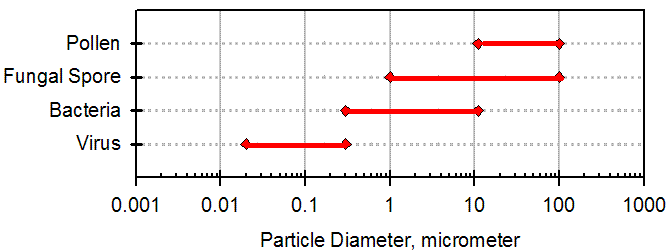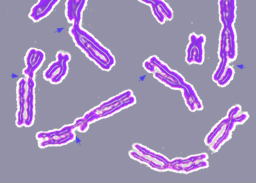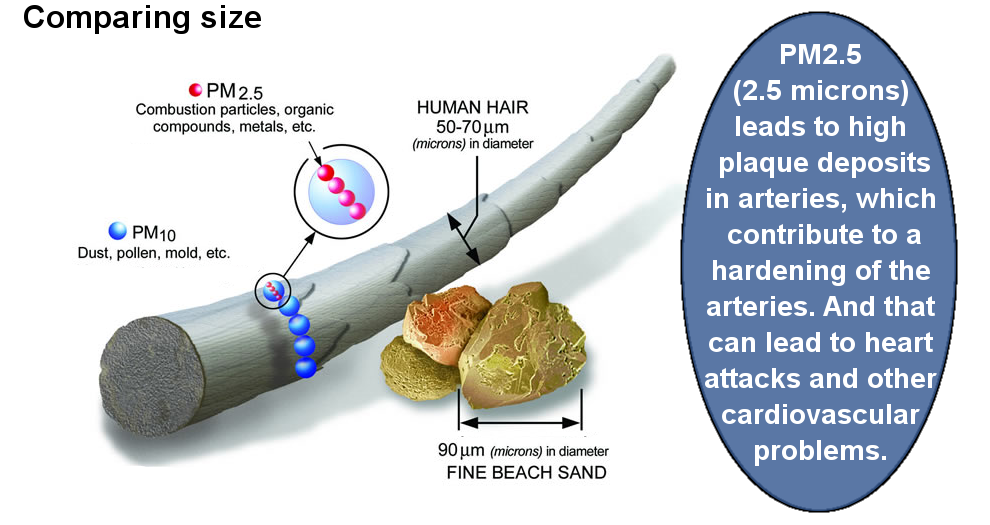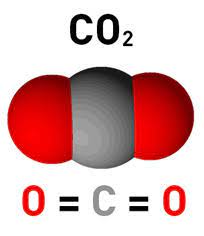Biological Contaminants & Poor Indoor Air Quality: Allergens, Bacteria, Mites, Viruses
A number of diseases and illnesses can be traced to environmental factors related to poor indoor air quality.
Common allergies (which are medically referred to as Chronic Allergic Rhinitis) are caused by exposures to materials that have allergenic / antigenic properties. If an individual becomes sensitized, then inhalation or mucous membrane / skin contact exposures may result in inflammatory responses in the nose, throat, sinuses, eyes and upper airways. Typical symptoms are increased mucus / phlegm production, runny eyes and nose, as well as sneezing and coughing as the body attempts to expectorate these irritants.
Allergies related to inhaled substances are generally caused by immunological sensitization to dust mite antigens, mold spores, hyphal fragments, (which are bits of fungal biological material) pet danders and plant pollen. Certain antigens produced by insects such as cockroaches, birds, rats, mice and other rodents may also trigger histamine reactions.
These symptoms arise as a part of the bodily defense against foreign materials which can provoke inflammation by immunological sensitization and cumulative exposures through up to four different mechanisms – the most prominent of which is the production of IgE antibodies in response to exposures to an antigenic substance which can cause a detectable immune reaction. Antigens that provoke an IgE response are characterized as allergens.
Antigens and allergens are relatively large molecules and typically proteins. However, there are certain highly reactive compounds such as formaldehyde, (HCHO) toluene diisocyanate (TDI) and trimellitic anhydride (TMA) which can complex with proteins to produce hapten antigens which in turn induce allergic responses.
These factors can be synergistically amplified if the indoor air also has poor ventilation and a lack of fresh air exchange. A little known fact is that elevated carbon dioxide levels from tightly built buildings and homes INCREASES respiration rate, and therefore the intake of allergens and other bioaerosols that cause respiratory irritation and inflammation.
There is growing evidence that a large proportion of environmentally related or contributed illness is correlated with particulate phase (solid) and (to a lesser extent) gas phase exposures to contaminants produced by biological organisms such as mold, bacteria, dust mites, etc. And it is not just live organisms which are at issue, but even the RESIDUAL BIOLOGICAL MATERIAL of dead or non-viable fungus, molds, viruses, bacterial species and pets which can trigger symptoms and contribute or cause certain diseases.
These contaminants from both live and dead biological organisms include antigens, endotoxins, glucans, mycotoxins, microbial volatile organic compounds, (MVOCs) and immunologically active particles produced by insects, arachnids, (mites / spiders) and common pets such as cats and dogs.
These contaminants are known as “bioaerosols” or “organic dust” and vary in size from less than 1 micron to over 100 microns in diameter. Note that the smaller the particle, the more likely it is to remain suspended in the air (for days or longer) and penetrate the epithelial cells of the respiratory tract to enter the bloodstream directly.
Live species of microbiological origin may cause infectious disease by airborne transmission which again stresses the importance of indoor air quality. With a heavy enough load, infection through contact and / or ingestion of heavily contaminated surfaces (not necessarily inhaled) could result. Exposures to mold spores / fragments and allergens produced by insects, pet danders may cause immunological reactions such as chronic allergic rhinitis and asthma which has a high prevalence rate in developed countries and resembles symptoms of gas phase irritants. Exposures to HIGH concentrations of small fungal spores and the spores of higher bacteria may cause hypersensitivity pneumonitis.

Different Size, Shape and Arrangement of Bacterial Cells
Exposures to fungal glycans, bacterial endotoxins (such as found in Gram negative bacteria) or MVOCs may also cause inflammatory responses in the respiratory system. Mycotoxin exposure may directly poison the human organ systems.
These factors can be synergistically amplified if the indoor air also has poor ventilation and a lack of fresh air exchange. A little known fact is that elevated carbon dioxide levels from tightly built buildings and homes INCREASES respiration rate, and therefore the intake of allergens and other bioaerosols that cause respiratory irritation and inflammation.














































